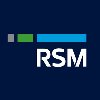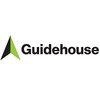Filter interviews by
PwC Senior Associate Interview Questions and Answers
49 Interview questions
The E2E process of refurbishment involves assessment, planning, execution, and final evaluation to restore items to optimal condition.
Assessment: Evaluate the condition of the item to determine refurbishment needs.
Planning: Develop a detailed plan outlining the refurbishment steps, timelines, and resources required.
Execution: Carry out the refurbishment process, which may include cleaning, repairing, and upgrading...
Estimating daily flights from Delhi involves analyzing airport capacity, flight schedules, and airline operations.
Indira Gandhi International Airport (IGI) is the main airport in Delhi.
On average, a major airport can handle 50-100 flights per hour.
Assuming IGI operates around 18 hours a day, this could mean 900-1800 flights daily.
Considering domestic and international flights, the number may vary.
For example, duri...
SailPoint certification involves training, exams, and maintaining credentials through continuous education.
Complete the required training courses offered by SailPoint.
Pass the certification exam, which tests knowledge of SailPoint Identity Governance.
Certifications include IdentityNow and IdentityIQ, each with specific focus areas.
Maintain certification by completing continuing education credits or re-certifying e...
The onboarding process in SailPoint involves user provisioning, role assignment, and access management to ensure secure access.
User Provisioning: Automatically create user accounts in various systems based on HR data.
Role Assignment: Assign predefined roles to users based on their job functions, ensuring appropriate access levels.
Access Management: Implement policies to manage user access rights and ensure complia...
What people are saying about PwC





Optimize stored procedures by analyzing execution plans, indexing, and reducing complexity for better performance.
Analyze execution plans to identify bottlenecks and optimize query performance.
Implement appropriate indexing strategies to speed up data retrieval, e.g., using composite indexes for multi-column queries.
Reduce complexity by breaking down large stored procedures into smaller, manageable ones, improving...
There are 5 radio buttons
Count each individual radio button
Ensure all radio buttons are included in the count
GST process in SAP SD involves configuring tax codes, determining tax rates, and generating tax reports.
Configure tax codes in SAP SD to represent different GST rates
Determine tax rates based on the type of goods or services being sold
Generate tax reports to track GST payments and refunds
Audit assertions are the claims made by management regarding the financial statements being audited.
Audit assertions include existence, completeness, valuation, rights and obligations, and presentation and disclosure.
They help auditors assess the accuracy and reliability of financial statements.
For example, existence assertion ensures that assets and liabilities actually exist at a given date.
Projects are unique endeavors with specific goals, timelines, and resources allocated to achieve desired outcomes.
Projects are temporary in nature, with a defined start and end date.
They have specific objectives and deliverables to be achieved within a set timeframe.
Projects require resources such as budget, team members, and materials to be allocated.
Project management methodologies like Agile or Waterfall are of...
Data abstraction in Java is achieved through abstract classes and interfaces.
Data abstraction in Java is achieved using abstract classes and interfaces.
Abstract classes are used to provide a blueprint for other classes to extend and implement.
Interfaces define a set of methods that a class must implement, but do not provide any implementation details.
By using abstract classes and interfaces, developers can hide th...
PwC Senior Associate Interview Experiences
182 interviews found
I applied via LinkedIn and was interviewed in Nov 2024. There was 1 interview round.
(5 Questions)
- Q1. About project experiences
- Q2. About P2P cycle
- Q3. Accounting entries in payables
- Ans.
Accounting entries in payables involve recording the liability for goods or services received but not yet paid for.
When a company receives goods or services on credit, a liability is created in accounts payable.
The accounts payable account is credited to increase the balance, representing the amount owed to the supplier.
When the payment is made, the accounts payable account is debited to reduce the balance.
For example,...
- Q4. Oracle Cloud latest development features
- Ans.
Oracle Cloud continuously updates its platform with new features and enhancements to improve performance and user experience.
Oracle Cloud Infrastructure (OCI) offers new services like Autonomous Database, Cloud HSM, and Data Safe
OCI provides enhanced security features such as Key Management, Identity and Access Management, and Security Zones
Integration with popular tools like Kubernetes, Terraform, and Ansible for seam...
- Q5. Scenario on integration
Interview Preparation Tips
I applied via Recruitment Consulltant and was interviewed in Oct 2024. There were 3 interview rounds.
(4 Questions)
- Q1. Azure function vs logic app
- Ans.
Azure Functions are event-driven, serverless compute whereas Logic Apps are workflow automation platforms.
Azure Functions are used for executing code in response to events, such as HTTP requests or messages from queues.
Logic Apps are used for orchestrating workflows and integrating various services and applications.
Azure Functions are more suitable for small, focused tasks, while Logic Apps are better for complex workf...
- Q2. App service and web jobs
- Q3. Asynchronus programming
- Q4. Can we write asynchronus method without await
- Ans.
Yes, we can write an asynchronous method without using await keyword.
Use Task.Run to run a method asynchronously without awaiting it
Use Task.Run to run a method on a background thread without blocking the main thread
Example: Task.Run(() => SomeMethod());
(2 Questions)
- Q1. Questions related to current project
- Q2. What is Jwt token
(4 Questions)
- Q1. Why we raise PR benifits of it
- Ans.
PRs (Pull Requests) are essential for collaborative coding, enabling code review, discussion, and integration of changes in a project.
Code Review: PRs facilitate peer review, allowing team members to provide feedback and catch potential issues before merging changes.
Collaboration: They enable collaboration among developers, making it easier to discuss and refine code changes through comments and suggestions.
Version Con...
- Q2. Questions related to azure devops
- Q3. What is framework
- Ans.
A framework is a set of tools, libraries, and best practices used to develop software applications.
Provides a structure for organizing code and implementing common functionalities
Promotes code reusability and maintainability
Examples include AngularJS, React, Spring Framework
- Q4. What is rest api
Skills evaluated in this interview
I applied via Approached by Company and was interviewed in Dec 2024. There was 1 interview round.
(2 Questions)
- Q1. General SAP SD questions
- Q2. Item category and schedule line category.
Interview Preparation Tips
I applied via Company Website and was interviewed in Sep 2024. There were 2 interview rounds.
(2 Questions)
- Q1. Mostly regarding projects
- Q2. Questions realed to Azure services
(3 Questions)
- Q1. Senerio based questions - which azure services could be used in this case
- Ans.
Azure offers various services for scalable, secure, and efficient solutions across different scenarios.
Azure Functions for serverless computing to run code on demand.
Azure Logic Apps for automating workflows and integrating services.
Azure App Service for building and hosting web applications.
Azure SQL Database for managed relational database services.
Azure Blob Storage for scalable object storage for unstructured data.
- Q2. Where do you see yourself in next 5 years
- Ans.
In the next 5 years, I see myself advancing to a managerial role within the company, leading a team and contributing to the organization's growth.
Continuing to excel in my current role and taking on additional responsibilities
Participating in leadership development programs to enhance my skills
Building strong relationships with colleagues and mentors for guidance and support
Setting clear career goals and regularly revi...
- Q3. What you expect from your employer
- Ans.
I expect my employer to provide opportunities for growth, a supportive work environment, fair compensation, and open communication.
Opportunities for professional development and advancement
A positive and inclusive work culture
Competitive salary and benefits
Transparent communication and feedback
Work-life balance support
Interview Preparation Tips
- Azure
I applied via Job Portal and was interviewed in Sep 2024. There was 1 interview round.
(5 Questions)
- Q1. Step by Step application setup process for Oracle Subscription Management
- Ans.
Setting up Oracle Subscription Management involves multiple steps including configuration, user setup, and data migration.
1. Configure Oracle Subscription Management by setting up products, pricing, and billing cycles.
2. Set up users with appropriate roles and permissions to access the system.
3. Migrate existing subscription data into the Oracle system for seamless transition.
4. Test the setup to ensure all functionali...
- Q2. How to setup automatic subscription numbering
- Ans.
Automatic subscription numbering can be set up by creating a unique identifier based on a specific format or algorithm.
Define the format or algorithm for generating the subscription numbers
Implement a script or program to automatically assign and increment the subscription numbers
Ensure the uniqueness and consistency of the generated numbers
Consider using a combination of letters, numbers, and symbols for added complex...
- Q3. Explain about different renewal process
- Ans.
Renewal processes vary depending on the type of service or product being renewed.
Renewal process for software subscriptions typically involves receiving a notification to renew, logging into the account, and making a payment.
Renewal process for insurance policies may involve receiving a renewal notice, reviewing the policy details, and contacting the insurance provider to renew.
Renewal process for memberships often inc...
- Q4. Pricelist setup
- Q5. Data migration process
Interview Preparation Tips
Skills evaluated in this interview
HR ROUND ^ PAST ACHIEVEMENT
(1 Question)
- Q1. RESUME ORIENTED QUESTIONS
(1 Question)
- Q1. CASE STUDY ON CREDIT CARD
- Q1. What is your experience with Fiori implementation?
- Q2. What is the process of implementing Governance, Risk, and Compliance (GRC) systems?
I applied via Company Website and was interviewed in Jun 2024. There were 2 interview rounds.
(2 Questions)
- Q1. Tell me the difference between functional and non-functional testing
- Q2. Tell me the difference between performance and capacity testing
- Ans.
Performance testing focuses on evaluating the speed, responsiveness, and stability of a system under a specific workload, while capacity testing assesses the system's ability to handle a certain level of traffic or data volume over time.
Performance testing measures the speed, responsiveness, and stability of a system under a specific workload.
Capacity testing evaluates the system's ability to handle a certain level of ...
(3 Questions)
- Q1. Tell me about a time that you had a disagreement with a colleague. How did you approach and resolve the disagreement?
- Ans.
I resolved a disagreement with a colleague by fostering open communication and focusing on our shared goals.
Open Dialogue: I initiated a one-on-one conversation to understand my colleague's perspective and express my own views respectfully.
Common Goals: We identified our shared objectives, which helped us realize that we were ultimately on the same team.
Compromise: We brainstormed solutions together, leading to a compr...
- Q2. What would you consider your biggest weakness? What have you done to work on it?
- Q3. How do you feel about working for a globally distributed team? What strategies do you take to make such teams run smoothly?
Skills evaluated in this interview
I applied via Approached by Company and was interviewed in Sep 2024. There were 2 interview rounds.
(1 Question)
- Q1. Moderate level questions about domain
(1 Question)
- Q1. Where do you see yourself in this organisation after 3-4 years.
- Ans.
In 3-4 years, I envision myself as a key contributor, leading projects and mentoring junior associates to drive organizational success.
I aim to take on leadership roles in major projects, such as leading a cross-functional team to improve operational efficiency.
I plan to enhance my skills through continuous learning, possibly obtaining certifications relevant to our industry.
I see myself mentoring new associates, shari...
I applied via Recruitment Consulltant and was interviewed in Sep 2024. There was 1 interview round.
(2 Questions)
- Q1. Do not apply in PwC
- Q2. Save yourself from PwC
Interview Preparation Tips
They advertise the role one level higher and then after the interview says
'Based on the interview we can't hire you at this level but at same level and salary.'
Purely because they don't have budget.
Do not get disheartened and refrain yourself from accepting the interview invites from PwC from next time. Save yourself from waste of time.
PwC Interview FAQs
Some of the top questions asked at the PwC Senior Associate interview -
The duration of PwC Senior Associate interview process can vary, but typically it takes about less than 2 weeks to complete.
Tell us how to improve this page.
PwC Interviews By Designations
- PwC Associate Interview Questions
- PwC Senior Associate Interview Questions
- PwC Consultant Interview Questions
- PwC Associate2 Interview Questions
- PwC Associate Consultant Interview Questions
- PwC Manager Interview Questions
- PwC Senior Consultant Interview Questions
- PwC Technology Consultant Interview Questions
- Show more
Interview Questions for Popular Designations
Overall Interview Experience Rating
based on 183 interview experiences
Difficulty level
Duration
Senior Associate Interview Questions from Similar Companies
PwC Senior Associate Reviews and Ratings
based on 1.7k reviews
Rating in categories
|
Senior Associate
18.8k
salaries
| ₹7.5 L/yr - ₹31 L/yr |
|
Associate
15.1k
salaries
| ₹5 L/yr - ₹18.6 L/yr |
|
Manager
7.5k
salaries
| ₹14 L/yr - ₹48 L/yr |
|
Senior Consultant
4.9k
salaries
| ₹9.1 L/yr - ₹33 L/yr |
|
Associate2
4.6k
salaries
| ₹4.8 L/yr - ₹16.5 L/yr |

Deloitte

Ernst & Young

Accenture

TCS
- Home >
- Interviews >
- PwC Interview Questions

















